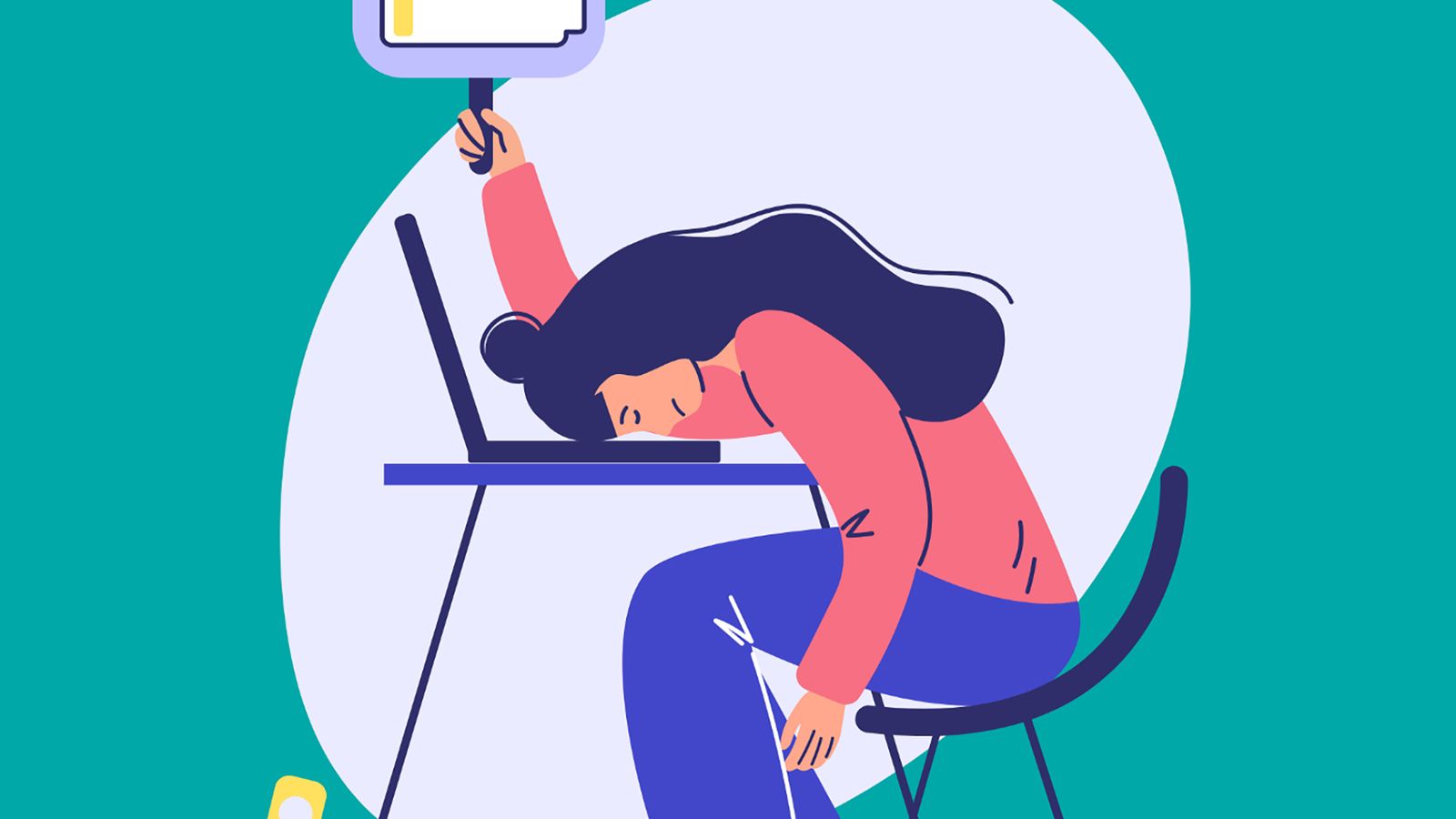Lifestyle
How to Deal with Burnout From Work or School
Deal with burnout from work or school. Learn to recognize signs, take breaks, prioritize self-care, set boundaries, & find recovery strategies.
Feeling drained, unmotivated, and overwhelmed by work or school? You might be experiencing burnout. Burnout isn’t just feeling stressed; it’s a state of physical, emotional, and mental exhaustion often caused by prolonged stress. It can make you feel cynical, detached from your work or studies, and less effective at what you do. I’ve definitely felt the heavy weight of burnout before, where even simple tasks felt impossible. Recognizing it is the first step to getting back on track.
Dealing with burnout requires making changes to recover and prevent it from happening again. It’s a process, not an overnight fix, and involves focusing on your well-being. Here’s a how-to guide on dealing with burnout from work or school.
Step 1: Recognize the Signs of Burnout
Burnout has several common signs. Pay attention to how you’re feeling physically and mentally.
- Emotional Exhaustion: Feeling drained, unable to cope, or like you have nothing left to give.
- Cynicism and Detachment: Feeling disillusioned, negative about your work or studies, or detached from colleagues or classmates.
- Reduced Accomplishment: Feeling ineffective, lacking in achievement, or questioning your competence.
- Physical Symptoms: Chronic fatigue, headaches, changes in sleep patterns (insomnia or sleeping too much), changes in appetite.
- Irritability: Getting easily frustrated or having a shorter temper.
- Difficulty Concentrating: Trouble focusing, poor memory, or feeling distracted.
How to Recognize: Be honest with yourself about how you’re feeling over a sustained period. It’s normal to feel stressed sometimes, but if these feelings are persistent and impacting your ability to function, it could be burnout. I realized I was burnt out when I started dreading checking emails and felt constantly tired, even after sleeping.
Step 2: Take a Break
Stepping away from the source of stress is often the most immediate and necessary step.
- Take Time Off: If possible, use vacation days, sick leave, or request a leave of absence from work or school. Even a few days can help.
- Take Shorter Breaks: If a long break isn’t possible, build regular, short breaks into your day. Step away from your desk, go for a walk, or do something completely unrelated to work or school for a few minutes every hour.
How to Break: The goal is to create distance from the stressor. Use the time off to rest, recharge, and do things you enjoy. During short breaks, avoid thinking about work or school tasks. Taking a long weekend away from my usual environment helped me clear my head significantly.
Step 3: Prioritize Self-Care
Burnout often happens when you neglect your basic needs. Re-focus on taking care of yourself.
- Sleep: Aim for 7-9 hours of quality sleep each night. Establish a regular sleep schedule and a relaxing bedtime routine.
- Nutrition: Eat balanced meals with plenty of fruits, vegetables, whole grains, and protein. Limit processed foods, excessive sugar, and caffeine, especially in the afternoon.
- Exercise: Engage in regular physical activity. Even a brisk walk for 30 minutes most days can reduce stress and boost your mood. Find an activity you enjoy.
- Mindfulness and Relaxation: Practice techniques like deep breathing, meditation, yoga, or progressive muscle relaxation to calm your nervous system.
How to Prioritize: Schedule self-care activities into your day or week like appointments you can’t miss. Start small if needed. Even ensuring I ate regular, healthy meals instead of skipping them made a difference in my energy levels.
Step 4: Set Boundaries
Burnout often stems from feeling overwhelmed and unable to say no. Establishing clear boundaries is crucial for recovery and prevention.
- Define Work/Study Hours: Set specific times for working or studying and stick to them. Avoid checking emails or doing tasks outside of these hours.
- Learn to Say No: It’s okay and necessary to decline extra tasks or commitments if you are already at capacity. You can say no respectfully without over-explaining.
- Limit Connectivity: Turn off work or school notifications on your personal devices after hours. Create physical or digital separation between work/study and personal life.
How to Set Boundaries: Be firm but polite. Communicate your availability to colleagues or classmates. It might feel uncomfortable initially, but setting boundaries protects your time and energy. Learning to say “I can’t take that on right now” was difficult but essential for me.
Step 5: Seek Support
You don’t have to deal with burnout alone. Connecting with others can provide emotional support and practical help.
- Talk to Friends and Family: Share how you’re feeling with trusted loved ones. Simply talking about it can be relieving.
- Connect with Colleagues or Classmates: Talk to peers who might understand the pressures you’re facing. Share experiences and offer support to each other.
- Seek Professional Help: Consider talking to a therapist, counselor, or doctor. Mental health professionals can provide strategies for coping with stress and burnout and address any underlying issues. Your workplace or school may offer employee assistance programs or counseling services.
How to Seek Support: Reach out to someone you feel comfortable with. Don’t wait until you’re at a breaking point. A therapist helped me understand the root causes of my burnout and develop healthier coping mechanisms.
Step 6: Re-evaluate Your Workload and Priorities
Look critically at what is contributing to your burnout. Can anything change?
- Assess Your Tasks: Identify which tasks or responsibilities are the biggest sources of stress or feel most overwhelming.
- Prioritize: Focus on the most important tasks and let go of or delegate less critical ones if possible.
- Talk to Your Supervisor or Instructor: Discuss your workload and see if adjustments can be made, deadlines can be moved, or support can be provided.
How to Re-evaluate: Be realistic about what you can handle. It’s better to do a few things well than many things poorly and burn out. Having an open conversation with my manager about workload helped distribute tasks more evenly.
Step 7: Find Ways to De-stress and Recharge
Engage in activities that help you relax, unwind, and regain energy.
- Hobbies: Make time for hobbies you enjoy, whether it’s reading, gardening, playing music, or painting.
- Spend Time in Nature: Being outdoors can reduce stress. Go for walks in a park or spend time in nature.
- Listen to Music or Podcasts: Find content that helps you relax or distracts you from stress.
- Practice Self-Compassion: Be kind to yourself. Recognize that burnout is a response to excessive stress, and it’s okay to not be performing at your peak.
How to Recharge: Actively schedule these activities into your routine. Don’t view them as optional extras. They are essential for your recovery. Finding joy in my hobbies again was a key part of recovering my energy.
Step 8: Make Gradual, Sustainable Changes
Recovering from burnout takes time. Focus on making small, consistent changes rather than trying to overhaul everything at once.
- Implement one or two self-care habits at a time.
- Gradually introduce boundaries.
- Consistently practice stress-relief techniques.
How to Make Changes: Be patient with yourself. Some days will be better than others. Celebrate small victories. The goal is to build healthier habits that prevent future burnout. Focusing on one small change at a time, like ensuring I took a proper lunch break every day, felt manageable and built momentum.
Dealing with burnout from work or school is a challenge, but recovery is possible by prioritizing your well-being. By recognizing the signs, taking breaks, focusing on self-care, setting boundaries, seeking support, re-evaluating your situation, finding ways to recharge, and making gradual changes, you can move towards recovery and build resilience against future burnout. It’s a journey of learning to listen to your body and mind and making necessary adjustments for a healthier life. Taking the first step towards addressing my burnout was the hardest, but it was absolutely worth it for my health and happiness.



















